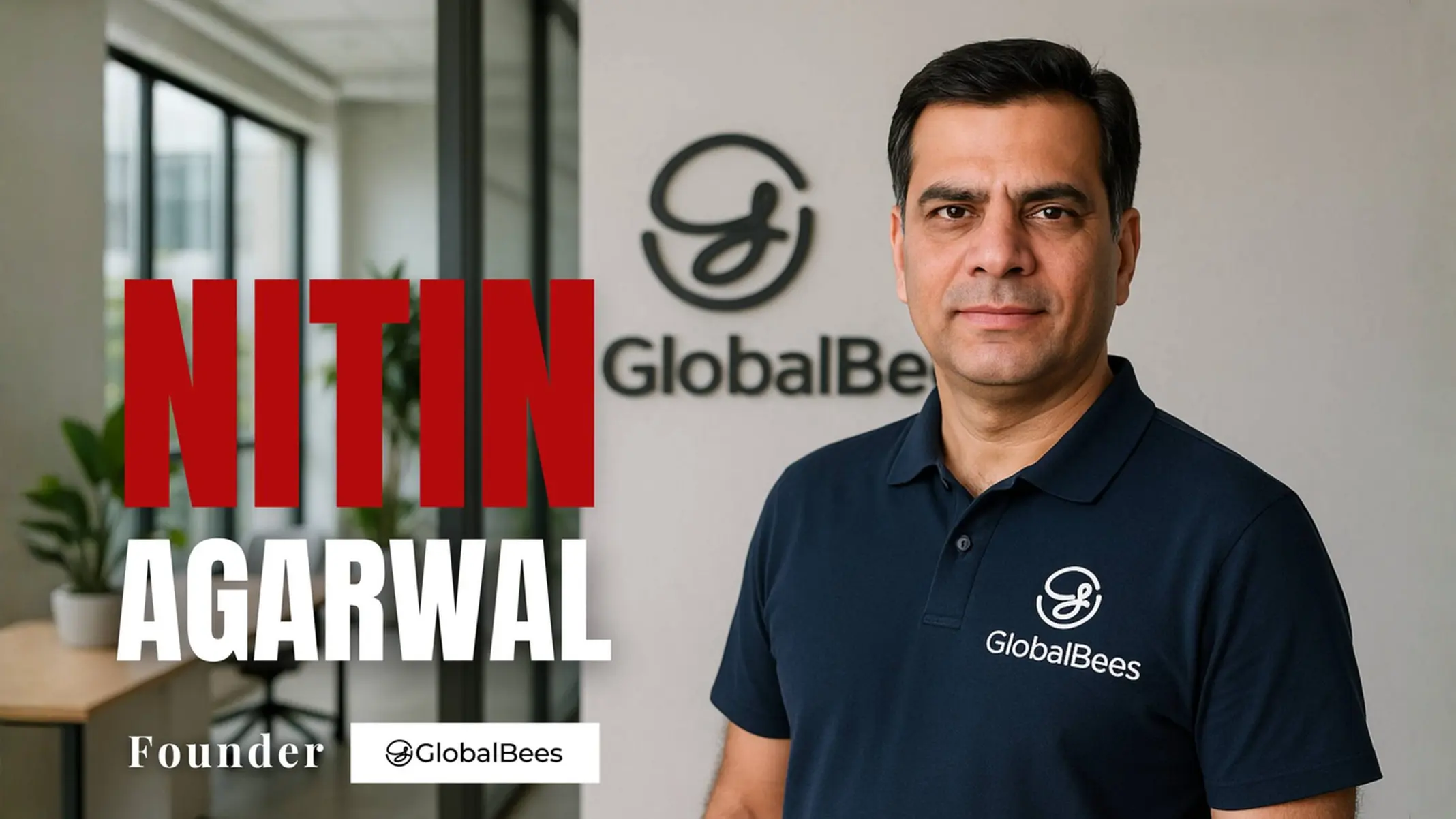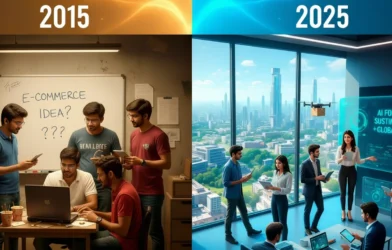Author: Dev Patel | EQMint
Company History
GlobalBees was founded in 2021 as a roll-up aggregator of e-commerce brands in India. Its ambition: to identify digital-first consumer brands with potential and scale them using shared infrastructure, capital, and operational muscle.
Shortly after incorporation, the company made rapid moves—by December 2021, it had already crossed unicorn valuation status. GlobalBees acquired or partnered with several D2C brands early on, such as The Better Home, &Me, Yellow Chimes, Reach, and more. As of mid-2022, reports indicate it had invested in brands such as HealthVit, Top Gummy, UrbanGabru, Urban Yog, and Kuber Industries. Inc42
Over time, GlobalBees has expanded its operations, brought more brands under its umbrella, and positioned itself as one of India’s prominent D2C “brand factories.” Its parent/affiliate relationship with FirstCry / BrainBees has further strengthened its backing and strategic alignment within consumer goods.
In recent years, GlobalBees has shown strong financial growth: in Q2 FY24, it recorded a 55% year-on-year revenue jump and a 154% year-on-year surge in adjusted EBITDA. These metrics suggest operational improvement as scaling continues.
However, its fast scaling has not come without challenges. In 2025, an insolvency plea was filed against GlobalBees by Kuber Industries over unpaid dues (~₹65 crore), which signals stress in its financial or credit relationships.
Founders
GlobalBees is co-founded by Nitin Agarwal and Supam Maheshwari. Supam Maheshwari is also known as one of the founders of FirstCry and has deep experience in consumer retail operations. Nitin Agarwal has a background in finance, operations, and digital transformation roles in various firms, bringing expertise in scaling businesses.
(Other accounts mention Deepak Khetan also playing a CFO / strategic role in GlobalBees, though primary public sources most frequently cite Agarwal and Maheshwari.) The founders’ synergy is in combining brand / retail experience (via Maheshwari / FirstCry) and operational & financial transformation acumen (via Agarwal) to pursue the roll-up model in India’s consumer space.
Business Model
GlobalBees follows a “house of brands / aggregator / roll-up” model—closely analogous to the Thrasio model in the U.S. The key facets of its business model include:
Acquisition / partnering with digital brands
- It targets brands with annual revenues typically between USD 1 million to USD 20 million as an indicator of product market fit.
- Preference is given to brands in repeat-consumption categories (home care, personal care, nutrition, wellness), with global appeal and scalable unit economics.
- It looks for e-commerce friendliness, SKU longevity, and founders’ vision alignment.
Centralized operating platform & shared services
- After acquiring brands, GlobalBees applies its centralized infrastructure in marketing, data & analytics, supply chain & logistics, technology, working capital, vendor management, and growth operations.
- The idea: instead of each brand reinventing operations, they plug into a shared “engine room” for scale advantages.
- It uses AI / data-driven decisioning, dynamic pricing, real-time inventory, and automation to optimize margins and growth.
Omni-market sales & distribution leverage
- Brands are sold across major online channels (Amazon, Flipkart, etc.) and may expand to offline or hybrid retail distribution.
- GlobalBees leverages the reach of its parent / network (FirstCry, others) to support cross-channel expansion.
- Portfolio synergy & cross-learning effects
- Insights gained from one brand (e.g. marketing channels, consumer behaviour, logistics) can be applied across the portfolio.
- Shared vendor / supplier relationships, bulk sourcing, and scale negotiation also generate cost advantages.
- Monetization & value realization levers
- As brands scale, exit or monetization options exist: spin-outs, strategic sales, or long-term cash flows.
- The parent firm may also charge internal service fees, take profit shares, or structure equity deals with founders.
- Over time, the aggregator could offer its backend tech/infrastructure as a service (to external D2C brands).
Because of this model, GlobalBees is not just a passive investor—it acts as an active operator, trying to transform acquired brands into scalable, higher-margin businesses.
Current Competitors
GlobalBees operates in a competitive landscape of D2C aggregators, large consumer-goods firms, and ambitious standalone D2C challengers. Key competitors include:
- Mensa Brands — Another Indian D2C brand aggregator, often cited as a peer in the “house of brands” race.
- 10Club, GOAT Brand Labs, UpScalio, Evenflow, Powerhouse91 — Indian startups following the roll-up aggregator model.
- Thrasio (global) — The U.S. pioneer of e-commerce brand aggregation; their model is a reference point and potential entrant in India.
- Large FMCG / CPG majors (e.g., Unilever, P&G, L’Oréal) — Though structurally different, they compete in overlapping consumer categories and have stronger capital, brand equity, and distribution.
- Standalone D2C challenger brands — Non-aggregated brands that are highly optimized and ambitious (e.g. in beauty, wellness, home) can pose competitive threats, particularly in brand loyalty and niche markets.
- Tech & service providers to D2C — Companies offering marketing, logistics, analytics, or supply chain SaaS to smaller D2C brands can overlap in capability space (though not direct aggregator competition).
Because GlobalBees combines both capital and operating play, its key competition is not just in brand space, but in being able to deliver superior scaling and integration compared to others.
Challenges & Risks
No high-growth model is without risks. For GlobalBees, some notable challenges include:
- Integration complexity: Assimilating acquired brands (their people, culture, systems) into a unified operating engine is nontrivial.
- Founder alignment & retention: As founders give up control, maintaining their motivation, brand identity, and product passion is critical.
- Capital intensity & burn: Roll-ups require significant funding to acquire, scale, and support multiple brands.
- Credit / debt risk: If scaling takes longer or margins compress, debt or payables may pile up (as signaled by recent insolvency plea).
- Macro headwinds & consumer slowdown: Consumer discretionary spending can suffer in downturns, affecting brand performance.
- Overlap & cannibalization: In a large portfolio across categories, brands may overlap or cannibalize each other if not curated carefully.
- Regulatory & legal complexity: Handling multiple brands, jurisdictions, tax regimes, and contract obligations increases legal overhead and risk.
The insolvency plea filed in 2025 by Kuber Industries over unpaid dues (₹65 crore) underscores the financial stress such models may face amid aggressive scaling.
Future Outlook & Strategic Focus
Looking ahead, GlobalBees likely needs to focus on:
- Strengthening cash flow and margin discipline, ensuring sustainable scaling rather than just growth-at-all-costs.
- Resolving legal / credit disputes quickly to maintain brand and investor confidence.
- More rigorous brand selection to avoid poor-performing acquisitions dragging the portfolio.
- Expanding into offline channels or marketplace alliances to diversify distribution risk.
- Enhancing technological depth (predictive analytics, AI, automation) to sharpen competitive edges.
- Possibly offering its backend tech/operating platform as a service to external D2C brands (i.e., a B2B arm).
- Fostering strong brand identity, consumer trust, and product quality across its portfolio to avoid brand dilution.
If managed well, GlobalBees could evolve from a fast-growing aggregator into a long-term consumer goods powerhouse in India and even expand internationally.
Summary
GlobalBees is one of India’s prominent D2C brand aggregators—a “brand factory” that acquires, scales, and operates digital-first consumer product brands. Founded in 2021 by Nitin Agarwal and Supam Maheshwari, it rapidly achieved unicorn status by leveraging a centralized operational platform, capital heft, and domain expertise. Its model is analogous to the U.S. Thrasio model, adapted for India’s consumer landscape.
As it navigates challenges such as financial stress (signalled by the recent insolvency plea) and integration complexity, its ability to balance growth and profitability will determine whether it remains a poster child for India’s roll-up play or a cautionary tale in high-octane startup scaling.
Reference Links
- Inside GlobalBees and the ecommerce roll-up gambit — Forbes India
- What D2C brands aggregator GlobalBees looks for in a startup to invest — YourStory
- GlobalBees invests in five brands
- FirstCry arm GlobalBees logs 55% jump in Q2 revenue (Economic Times)
Disclaimer: This article is based on information available from public sources. It has not been reported by EQMint journalists. EQMint has compiled and presented the content for informational purposes only and does not guarantee its accuracy or completeness. Readers are advised to verify details independently before relying on them.









